Related Research Articles

Henry Hardinge, 1st Viscount Hardinge, was a British Army officer and politician. After serving in the Peninsular War and the Waterloo Campaign he became Secretary at War in Wellington's ministry. After a tour as Chief Secretary for Ireland in 1830 he became Secretary at War again in Sir Robert Peel's cabinet. He went on to be Governor-General of India at the time of the First Anglo-Sikh War and then Commander-in-Chief of the Forces during the Crimean War.
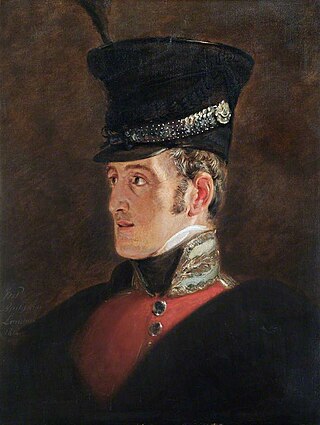
Field Marshal John Colborne, 1st Baron Seaton, was a British Army officer and colonial governor. After taking part as a junior officer in the Anglo-Russian invasion of Holland, Sir Ralph Abercromby's expedition to Egypt and then the War of the Third Coalition, he served as military secretary to Sir John Moore at the Battle of Corunna. He then commanded the 2nd Battalion of the 66th Regiment of Foot and, later, the 52nd Regiment of Foot at many of the battles of the Peninsular War. At the Battle of Waterloo, Colborne on his own initiative brought the 52nd Regiment of Foot forward, took up a flanking position in relation to the French Imperial Guard and then, after firing repeated volleys into their flank, charged at the Guard so driving them back in disorder.

Field Marshal Sir Hew Dalrymple Ross, was a British Army officer. After seeing active service during the Irish Rebellion of 1798, he fought as a troop commander in many of the battles of the Peninsular War and the Hundred Days. He went on to become the Artillery Commander, Northern District with delegated command over all the forces of the four northern counties before being promoted to Deputy Adjutant-General, Royal Artillery. Ross was the last person to hold the title of Lieutenant-General of the Ordnance, assuming responsibility for the artillery component sent to take part in the Crimean War under Lord Raglan. After the war he served as Master Gunner, St James's Park, a senior ceremonial post in the Royal Artillery.

John Fane, 11th Earl of Westmorland, styled Lord Burghersh until 1841, was a British soldier, politician, diplomat, composer and musician.
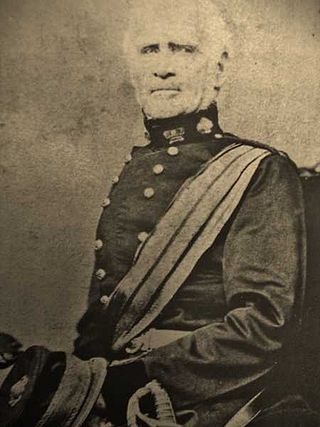
Field Marshal Sir William Shearman Rowan, was a British Army officer. He served in the Peninsular War and then the Hundred Days, fighting at the Battle of Waterloo and taking part in an important charge led by Sir John Colborne against the Imperial Guard when he was wounded. He later assisted Colborne in Colborne's new role as Acting Governor General of British North America during the rebellions by the Patriote movement in 1837. Rowan returned to Canada as Commander-in-Chief, North America in which role he made an important conciliatory speech in response to the burning of the Parliament Buildings in Montreal by an angry mob in April 1849.

The 50th Regiment of Foot was an infantry regiment of the British Army, raised in 1755. Under the Childers Reforms it amalgamated with the 97th Regiment of Foot to form the Queen's Own Royal West Kent Regiment in 1881.
Lieutenant General Sir Thomas Arbuthnot, KCB was a British Army commander.
The 85th Regiment of Foot was a British Army line infantry regiment, raised in 1793. Under the Childers Reforms it amalgamated with the 53rd (Shropshire) Regiment of Foot to form the King's Shropshire Light Infantry in 1881.

Field Marshal Sir Edward Blakeney was a British Army officer. After taking part in the British occupation of Dutch Guiana as a junior officer and being taken prisoner by privateers three times, he participated in the Anglo-Russian invasion of Holland in 1799. Blakeney subsequently joined the expedition to Denmark led by Lord Cathcart in 1807. He went on to command the 2nd Battalion of the 7th Regiment of Foot and then both battalions of that regiment in many of the battles of the Peninsular War. After joining the Duke of Wellington as he marched into Paris in 1815, Blakeney fought in the War of 1812. He then commanded a brigade in the army sent on a mission to Portugal to support the constitutional government against the absolutist forces of Miguel I of Portugal in 1826. Blakeney's last major appointment was as Commander-in-Chief, Ireland, a post he held for nearly twenty years.
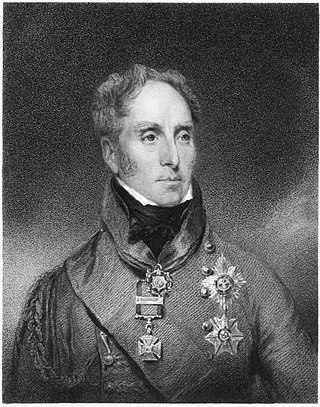
Lieutenant-General Sir James Leith was a Scottish soldier who served in the British Army, commanding the 5th Division in the Duke of Wellington's Anglo-Portuguese Army at several critical battles during the Peninsular War between 1810 and 1813.
General Sir John Oswald was a prominent British Army officer during the French Revolutionary and Napoleonic Wars whose service was conducted in seven different theatres of war. Oswald was born in Fife and educated in France, which gave him both excellent command of the French language and close connections with the French aristocracy. The excesses of the French Revolution gave him a hatred of the French Republic and later Empire, and his exemplary service in the West Indies, the Netherlands, Malta, Italy, Egypt, the Adriatic and finally the Peninsular War demonstrated both his keen tactical and strategic understanding his and personal courage.
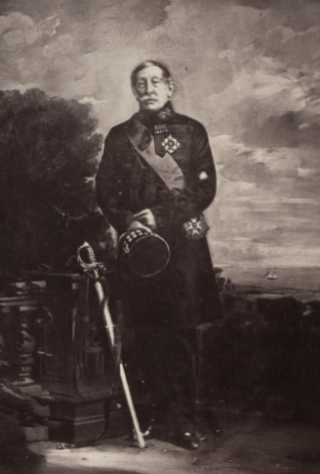
Field Marshal Sir Alexander George Woodford, GCB, KCMG, was a British Army officer. After taking part in the Anglo-Russian invasion of Holland, he served in most of the battles of the Napoleonic Wars. During the Hundred Days he commanded the 2nd battalion of the Coldstream Guards at the Battle of Quatre Bras, the Battle of Waterloo and the storming of Cambrai. He went on to become lieutenant governor and brigade commander at Malta, lieutenant governor and brigade commander at Corfu and then commander of the British garrison on the Ionian Islands before being appointed Governor and Commander-in-Chief of Gibraltar.

General Sir John Bell was a British soldier and magistrate. At the time of his death, he was the senior general of the British Army.
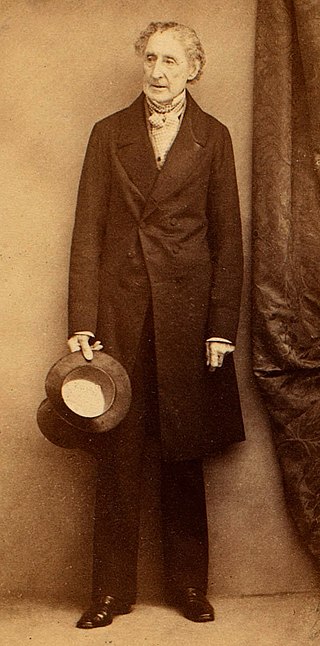
General Sir Frederick Stovin was a British Army officer who served throughout the Napoleonic Wars and the War of 1812. After the end of the wars, he commanded colonial garrisons and served in administrative roles in Ireland, before retiring with the rank of colonel to take up a position at court as a Groom in Waiting under Queen Victoria. In retirement, he continued to rise through the ranks of general officers by seniority, dying a full general.
General Sir William Houston, 1st BaronetKC was a British Army officer and Governor of Gibraltar. Houston joined the army in 1781, and by the start of the French Revolutionary War was a captain. He fought in the Flanders campaign before being promoted to major in 1794. As a lieutenant-colonel he fought at the Capture of Minorca and at the sieges of Alexandria and Cairo. Promoted to colonel in 1802, Houston fought in the Walcheren Expedition of 1809 before being promoted to major-general.
Sir Gregory Holman Bromley Way (1776–1844) was an English lieutenant-general.
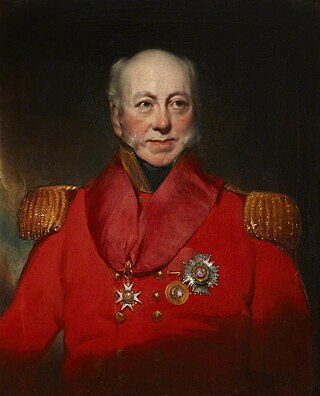
Sir Arthur Brooke KCB was an Irish officer of the British Army during the French Revolutionary and Napoleonic Wars, and the Peninsular War and War of 1812. He rose to the rank of lieutenant-general.
Colonel Michael Childers was a British Army officer who served in the Peninsular War (1807–1814) and was present at the 1815 Battle of Waterloo.
Two vessels named His Majesty's hired armed lugger Sandwich served the British Royal Navy, one during the French Revolutionary Wars, and the other during the Napoleonic Wars.

Lieutenant-General Richard Egerton was a British Army officer who served during the French Revolutionary and Napoleonic Wars, predominantly as a staff officer. He fought throughout the Peninsular War, serving for two years as aide de camp to Rowland Hill. He reprised this role for the subsequent Hundred Days, participating in the Battle of Waterloo. Egerton continued his relationship with Hill after the end of the wars, serving as his private secretary when the latter became Commander-in-Chief of the Forces in 1828.
References
- 1 2 3 4 Hallen, Arthur Washington Cornelius; Stevenson, John Horne (1893). "The Scottish Antiquary, Or, Northern Notes & Queries". The Scottish Antiquary. VII (27). W. Green and Sons: 141–142.
- 1 2 3 4 5 6 7 8 The Military Annual. 1844. p. 426.
- 1 2 3 4 John Philippart, ed. (1820). The Royal Military Calendar. A.J. Valpy. pp. 187–188.
- ↑ "No. 15733". The London Gazette . 1 September 1804. p. 1087.
- ↑ "No. 16114". The London Gazette . 30 January 1808. p. 162.
- ↑ "No. 16121". The London Gazette . 20 February 1808. p. 266.
- ↑ "No. 16906". The London Gazette . 7 June 1814. p. 1182.
- ↑ "No. 17061". The London Gazette . 16 September 1815. p. 1878.
- ↑ "No. 17507". The London Gazette . 17 August 1819. p. 1475.
- ↑ "No. 18503". The London Gazette . 9 September 1828. p. 1688.
- ↑ "No. 19482". The London Gazette . 7 April 1837. p. 932.
- ↑ "No. 20232". The London Gazette . 9 June 1843. p. 1934.
- ↑ Bromley, Janet; Bromley, David (2011). Wellington's Men Remembered Volume 2: A Register of Memorials to Soldiers Who Fought in the Peninsular War and at Waterloo. Pen and Sword. p. 231. ISBN 978-1848846753.